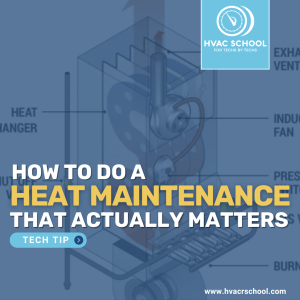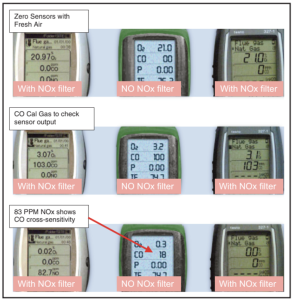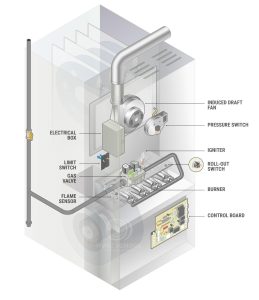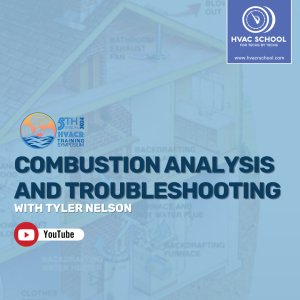BACK
 Another Ob-NOx-ious Combustion Product
Another Ob-NOx-ious Combustion Product
 I’ve Done It This Way for 20 Years – And That’s the Problem
I’ve Done It This Way for 20 Years – And That’s the Problem
 The Chemistry of Combustion In the Wild
The Chemistry of Combustion In the Wild
 Tool Selection: Combustion Analyzers
Tool Selection: Combustion Analyzers
 How To Do a Heat Maintenance That Actually Matters
How To Do a Heat Maintenance That Actually Matters
 Combustion Testing Doesn’t Stop in the Summer
Combustion Testing Doesn’t Stop in the Summer
 Practical Uses of Combustion Analysis
Practical Uses of Combustion Analysis
 The Case for Buying a Combustion Analyzer
The Case for Buying a Combustion Analyzer
 Gas Furnaces – What a Tech Needs to Know
Gas Furnaces – What a Tech Needs to Know
 Combustion Analysis w/ Tony G.
Combustion Analysis w/ Tony G.
 UEI at AHR: Carbon Monoxide Safety and Combustion Analysis
UEI at AHR: Carbon Monoxide Safety and Combustion Analysis
 Primary & Secondary Air in Combustion – Short #187
Primary & Secondary Air in Combustion – Short #187
 Why and How of Combustion Analysis w/ Tyler Nelson
Why and How of Combustion Analysis w/ Tyler Nelson
 I’ve Got a Combustion Analyzer, What’s Next?
I’ve Got a Combustion Analyzer, What’s Next?
 Combustion Analysis and Troubleshooting
Combustion Analysis and Troubleshooting
 Combustion Analysis: Easier, Faster, and Better
Combustion Analysis: Easier, Faster, and Better
#combustion analysis
Tech Tips:

As we do fall maintenance and head into the heating season, combustion analysis becomes a big deal. (It’s always kind of a big deal, but now it’s a really big deal.) First and foremost, it tells us how much carbon monoxide (CO) is produced by burning. CO can make people ill, contribute to cognitive deterioration […]
Read more

Every trade has its favorite phrases. One of the most common in HVAC goes something like: “I’ve been doing it this way for 20 years and never had a problem.” When you hear that—or when you catch yourself saying it—it’s worth stopping to think. Usually, what that sentence really means is: “I’ve been doing it […]
Read more

If you’ve been following my writing for the last couple of years, you know that I like to blather on and on about combustion analysis. Now, I am by no means an expert on the subject, as I live in North Texas (which is not known for its intense heating season), but I love using […]
Read more

While gauge manifolds and manometers may only have one main function, some tools take several different measurements and will have more expansive specs. The combustion analyzer is one such example—combustion has so many elements, and we need something that can analyze the concentrations of several different substances as well as temperature. As such, a combustion […]
Read more

I know I’m not the only one who has sometimes felt a little bad doing heat maintenance. I remember many a day when my lead technician and I (as an apprentice) would crawl into an attic, clean the flame sensor, and then play FarmVille on our phones for 15 minutes before crawling down, giving the […]
Read more

This tech tip was written by Casey Contreras. Casey is a field coach and instructor for the National Comfort Institute (NCI). Thanks, Casey! As HVAC technicians, our careers often focus on either cooling or heating. Because of this split view, we typically ignore gas-fired appliances during the cooling season. There are dangers lurking in any […]
Read more

This tech tip reviews the live stream by the same name aired on November 1st, 2023. You can watch the full live stream HERE. We want to give special thanks to the guests: Jim Bergmann, Jim Davis, Tony Gonzalez, Louise Kellar, Bill Spohn, and Tyler Nelson! Gas furnaces (or any combustion equipment) create a controlled […]
Read more

Last year, I bought my first combustion analyzer. I had just started my own company and felt the additional weight of responsibility to sit down and determine the best way to verify that the furnaces I was servicing were working safely. In the past, the most extensive testing I had done was a visual inspection […]
Read more

It’s that time of year again—the furnace service calls are peaking. It’s a good idea to crack open Jason Obrzut’s book, Gas Heating: Furnaces, Boilers, Controls, Components, and listen to the many public podcasts and presentations by experts like Jim Bergmann. At HVAC School, we’re fortunate to have had some of the industry’s greatest minds […]
Read more
Videos:
Podcasts:

In this comprehensive training session from the symposium, Tony Gonzalez, Training Director at Fieldpiece, delivers an engaging and practical guide to combustion analysis for HVAC technicians. With 25 years of experience at Fieldpiece—from warehouse worker to training director—Tony brings both technical expertise and real-world application to this 50-minute interactive session focused on the company's […]
Read more

In this informative podcast episode, Bryan from HVAC School is joined by Louise Keller, the National Training Manager for UEI Test Instruments, to discuss the critical importance of carbon monoxide safety and proper combustion analysis. The conversation begins with lighthearted banter about the previous night's Tactical Awards ceremony before diving into the serious topic […]
Read more

In this short podcast, Bryan dives into a gas heating topic: primary & secondary air in combustion. Primary air is the air and oxygen content that enters the furnace BEFORE combustion. In older furnaces, prior to induced combustion, air was drawn in through the front. These older furnaces had adjustable shutters that we could […]
Read more

Bryan Orr interviews Tyler Nelson, an HVAC expert with over 20 years of experience as a contractor. They have an in-depth discussion about combustion analysis and why it is becoming increasingly important for HVAC technicians to utilize this process. The conversation provides an overview of combustion analysis benefits and why HVAC pros should incorporate […]
Read more
Events:

NOTE: If you cannot view the recording, the video may still be processing. The maximum wait time is 24 hours. We apologize for the delay and appreciate your patience.
Read more

NOTE: If you cannot view the recording, the video may still be processing. The maximum wait time is 24 hours. We apologize for the delay and appreciate your patience.
Read more

NOTE: If you cannot view the recording, the video may still be processing. The maximum wait time is 24 hours. We apologize for the delay and appreciate your patience.
Read more













